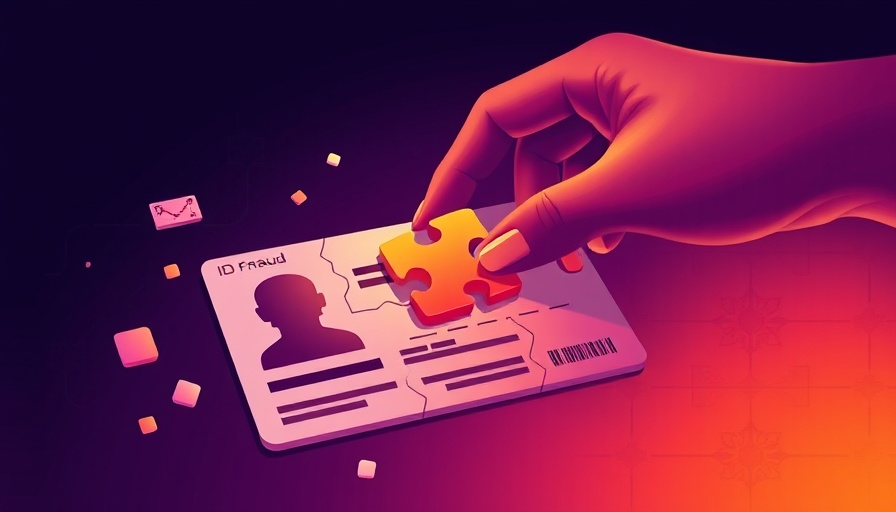
Understanding Synthetic ID Fraud: The Modern Financial Challenge
Synthetic ID fraud is emerging as one of the most significant threats in our digital age, where personal information is easily accessible, and technology is rapidly evolving. Unlike traditional identity theft, which involves stealing someone's existing identity, synthetic ID fraud involves creating a new identity using a combination of real and fabricated information. This form of fraud has gained traction because it can be more difficult to detect, making it a growing concern for consumers and financial institutions alike.
The Anatomy of Synthetic IDs
Synthetic IDs often blend information from various sources. For example, a fraudster may use the Social Security number of a child, combine it with an altered address, and create a completely new credit history. According to a report from the Federal Trade Commission, synthetic identity fraud costs businesses billions annually and destroys the credit scores of unsuspecting victims.
Why Fake IDs Are So Dangerous
The danger of synthetic identity fraud extends beyond monetary loss. Victims can find themselves entangled in a web of debt and poor credit scores, which can take years to resolve. Financial institutions may leverage data analytics to identify these synthetic identities, but they may not catch every instance quickly enough to prevent damage, putting both the businesses and the individuals at risk. Moreover, synthetic identities can be used to open various accounts and apply for loans, making them a versatile tool for fraudsters.
Recognizing the Signs: What to Look For
Being able to detect the potential signs of synthetic ID fraud is crucial for individuals and businesses alike. Here are a few red flags to watch for:
- Inconsistencies in Personal Information: Check for discrepancies in names, addresses, or social security numbers.
- Unusual Credit Activity: Monitor your credit report for any unfamiliar accounts or transactions.
- Delayed Responses: If a lender is slow to respond or provides inconsistent information, it may indicate fraudulent activity.
Preventing Synthetic ID Fraud: Tips for Consumers
To protect yourself from synthetic identity fraud, consider these strategies:
- Secure Your Information: Use strong passwords and two-factor authentication to guard your accounts.
- Check Your Credit Reports: Review your credit reports frequently to spot any unusual activity early.
- Be Cautious When Sharing Information: Limit sharing your personal information online, especially on social media.
What Businesses Can Do to Combat Synthetic ID Fraud
Businesses should invest in advanced identity verification solutions to detect synthetic identities early in the application process. Using AI and machine learning, organizations can analyze patterns and flag suspicious behavior, ultimately preventing fraudulent accounts from being created.
Policy Measures: The Role of Regulations
Legislation is also playing a role in combating synthetic ID fraud. Efforts like the proposed data protection regulations aim to hold businesses accountable for data breaches and improve identity verification processes. As these laws evolve, businesses must stay informed and compliant to protect themselves and their customers.
Looking Ahead: The Future of Identity Verification
The fight against synthetic ID fraud is ongoing, and as technology advances, so too must our strategies for prevention. From biometric verification methods to enhanced data analytics, the future holds promising techniques that can make it increasingly difficult for fraudsters to operate. Consumers, meanwhile, must remain vigilant and educated about their rights and the ongoing changes in legislation.
Taking Action to Protect Yourself
In an age where identity fraud is on the rise, it's crucial to take proactive steps to safeguard your identity. Invest in monitoring services, keep your information private, and stay informed about the tools and strategies that can help protect yourself from synthetic identity theft. By being aware and prepared, you can mitigate the risks that synthetic ID fraud poses.
 Add Row
Add Row  Add
Add 




 Add Row
Add Row  Add
Add 








Write A Comment